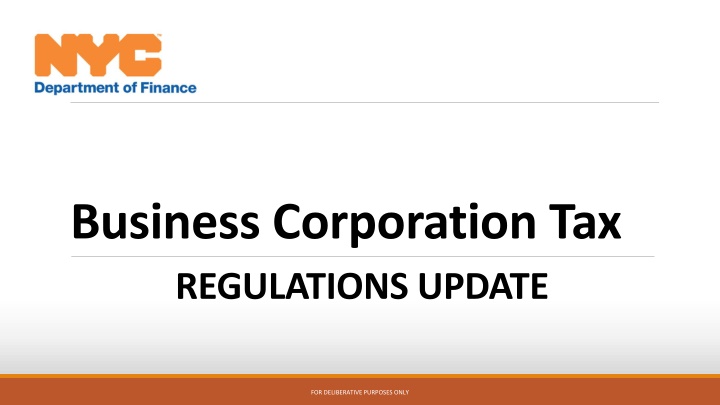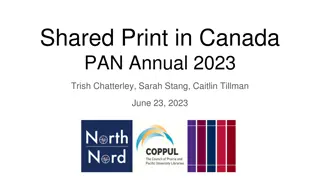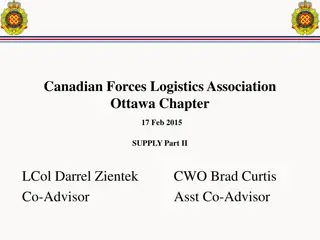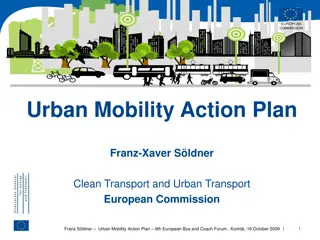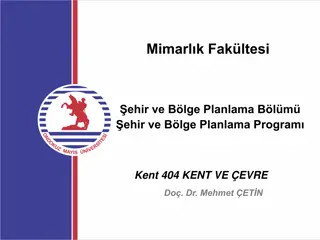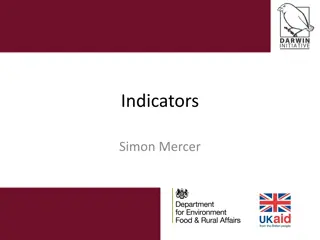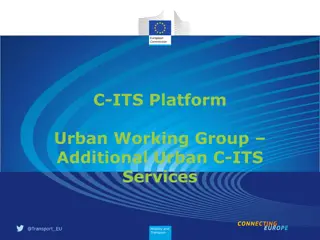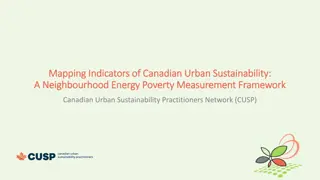Mapping Canadian Urban Sustainability Indicators
A framework developed by the Canadian Urban Sustainability Practitioners Network (CUSP) to measure and address energy poverty in urban neighborhoods. The project aims to reduce energy poverty through local energy access programs, clean energy transformation, and support for low/moderate income households. Objectives include building data access tools, promoting equity in clean energy programs, monitoring energy cost burdens, and supporting historically underserved groups. The measurement framework utilizes data from the 2016 Census to analyze household energy expenditures, housing characteristics, and demographic data for various geographic areas. The framework provides insights and profiles for urban and rural communities, enabling cross-tabulation for policy and program design.
Download Presentation

Please find below an Image/Link to download the presentation.
The content on the website is provided AS IS for your information and personal use only. It may not be sold, licensed, or shared on other websites without obtaining consent from the author.If you encounter any issues during the download, it is possible that the publisher has removed the file from their server.
You are allowed to download the files provided on this website for personal or commercial use, subject to the condition that they are used lawfully. All files are the property of their respective owners.
The content on the website is provided AS IS for your information and personal use only. It may not be sold, licensed, or shared on other websites without obtaining consent from the author.
E N D
Presentation Transcript
Business Corporation Tax REGULATIONS UPDATE FOR DELIBERATIVE PURPOSES ONLY
Please note, the policies presented in these slides are proposals for deliberative purposes, and do not reflect the final regulations. FOR DELIBERATIVE PURPOSES ONLY
Corporate Tax Reform of 2015 New York State passed the Franchise Tax on Business Corporations reform. Part A of Chapter 59 of the Laws of 2014 (amended by Part T of Chapter 59 of the Laws of 2015 and Part P of Chapter 60 of the Laws of 2016) The State Legislature passed a substantially similar Business Corporation Tax reform for New York City. Section 1 of Part D of Chapter 60 of the Laws of 2015 FOR DELIBERATIVE PURPOSES ONLY
Regulatory Action NYS Department of Taxation and Finance issued final regulations for the Franchise Tax on Business Corporations on December 27, 2023. The final regulations are over 400 pages. The NYS s regulations are a model for NYC s regulatory efforts. There are several statutory and policy differences. DOF s drafts will be reviewed by the Law Department. After receiving feedback and conducting further review, DOF aims to issue regulations through the City Administration Procedure Act (CAPA) in early 2025. FOR DELIBERATIVE PURPOSES ONLY
Overview of Proposal The City s proposal will largely align with the State s regulations. We are considering a few areas of potential divergence, including: 1. Allocation of Income from Partnerships 2. Allocation of Income form Passive Investment Customers 3. Clear and Convincing Evidence Standard 4. Billing Address Safe Harbor 5. Income from Real Estate Mortgage Investment Conduits (REMICs) FOR DELIBERATIVE PURPOSES ONLY
Allocation of Income from Partnerships This issue is unique to NYC because of the existence of the Unincorporated Business Tax (UBT). The aim is to keep a consistent method of allocating income from a partnership. The UBT allocation rules differ from the Business Corporation Tax allocation rules. Administrative Code section 11-654(4-a) allows for any method required or permitted by the regulations. Tax Law section 210(3) requires the use of the aggregate method as the primary method of allocating receipts of corporate partners. FOR DELIBERATIVE PURPOSES ONLY
Allocation of Income from Partnerships Any items of income or gain from a partnership will be allocated under the rules of the UBT and will not be included in the receipts factor of a corporate partner. The corporation s other income will be allocated under the business allocation percentage (BAP) calculated without regard for partnership items. The sum of the separately allocated partnership income and the business income allocated using the BAP will be the corporate partner s taxable income for the purposes of the business corporation tax. FOR DELIBERATIVE PURPOSES ONLY
Allocation of Income from Passive Investment Customers Passive investment customer - an entity that pools capital from passive investors for the purpose of trading or making investments in stock, bonds, securities, commodities, loans, or other financials assets, but that does not otherwise conduct a trade or business. Under NYS regulations, management, distribution, and administration services income from passive investment customers are to be apportioned based on the location of the investors that contribute to the pooled capital. If the taxpayer does not have this information, then the taxpayer may apportion the receipts based on the location where the contract for the services is managed by the passive investment customer. DOF will adopt NYS s regulations regarding the special allocation of income from passive investment customers, but will replace the second method (whereby the contract is managed by the passive investment customer) with a flat 8% allocation. FOR DELIBERATIVE PURPOSES ONLY
Clear and Convincing Evidence Standard To overcome presumption created within the regulations, NYS has imposed the clear and convincing evidence standard that applies to whichever party seeks to overcome the presumption. DOF will not include language specifying the standard of evidence necessary to overcome presumptions and will continue making determinations based on the taxpayer s individual circumstances. FOR DELIBERATIVE PURPOSES ONLY
Billing Address Safe Harbor If a taxpayer has 250 business customers purchasing substantially similar products or services and no more than 5% of receipts from such products or services are from any particular customer, then there is a presumption that the primary use location (for digital products or services) or the location where benefit is received (for other business receipts) is the customer s billing address. DOF proposes to increase the number of customers needed to meet the requirements of the billing address safe harbor to 1,000. FOR DELIBERATIVE PURPOSES ONLY
Income from Real Estate Mortgage Investment Conduits (REMICs) IRC Section 860E applies to holders of a residual interest in REMICs and requires that the taxable income of such interest holders be no less than the amount of the excess inclusion defined by IRC Section 860E(c). The excess inclusion is part of federal taxable income that serves as the starting point for the BCT. There is no statutory modification to deduct the excess inclusion from federal taxable income when calculating Entire Net Income. DOF intends to retain the excess inclusion in Entire Net Income. FOR DELIBERATIVE PURPOSES ONLY
Comments/Questions We will issue a written response to the relevant comments and questions we receive today and those submitted online. Thank you for joining us. FOR DELIBERATIVE PURPOSES ONLY
